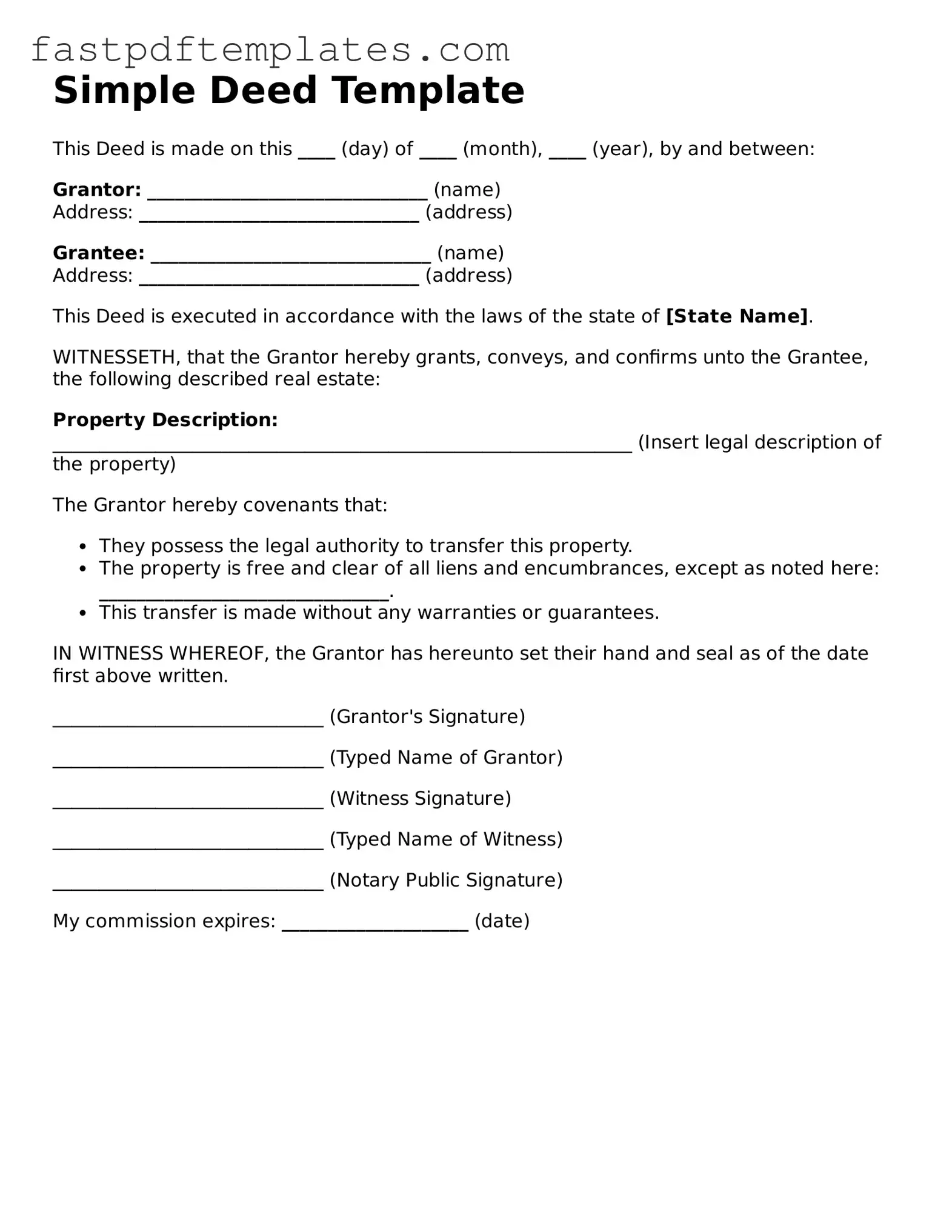Simple Deed Template
This Deed is made on this ____ (day) of ____ (month), ____ (year), by and between:
Grantor: ______________________________ (name)
Address: ______________________________ (address)
Grantee: ______________________________ (name)
Address: ______________________________ (address)
This Deed is executed in accordance with the laws of the state of [State Name].
WITNESSETH, that the Grantor hereby grants, conveys, and confirms unto the Grantee, the following described real estate:
Property Description:
______________________________________________________________ (Insert legal description of the property)
The Grantor hereby covenants that:
- They possess the legal authority to transfer this property.
- The property is free and clear of all liens and encumbrances, except as noted here: _______________________________.
- This transfer is made without any warranties or guarantees.
IN WITNESS WHEREOF, the Grantor has hereunto set their hand and seal as of the date first above written.
_____________________________ (Grantor's Signature)
_____________________________ (Typed Name of Grantor)
_____________________________ (Witness Signature)
_____________________________ (Typed Name of Witness)
_____________________________ (Notary Public Signature)
My commission expires: ____________________ (date)
